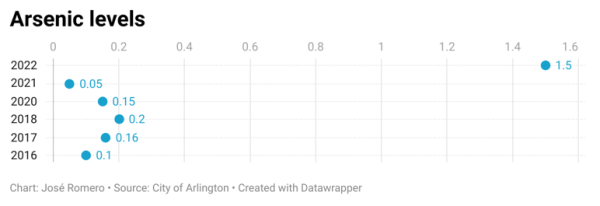ARLINGTON, Texas—It’s easy to take clean, fresh water for granted. But as Grand Prairie residents recently learned, safe drinking water is less than a given.
Roughly 60,000 Grand Prairie residents faced a no-use water restriction earlier this week when a firefighting foam entered the water supply, presumably from backflow as firefighters battled a warehouse fire on Tuesday. City officials lifted the restriction on drinking and using the water Thursday night, though they cautioned residents in the restricted area to flush their water systems before use.
With the issue of safe drinking water fresh in the public mind, how is Arlington ensuring access to safe and clean water even as it faces an ever-growing population and increasing demands on its water resources?
Testing and maintenance are key
The city’s water quality consistently meets or exceeds all federal and state standards, according to data from the Arlington Water Utilities Department. This is the result of a comprehensive approach to water management, which includes regular testing, maintenance of infrastructure and public education initiatives.

Providing clean water is a task the city takes “very seriously,” Keith Brooks, Arlington’s director of public works, said.
“Our team works tirelessly to monitor and maintain the quality of our water supply,” Brooks said.
One of the key components of Arlington’s water quality management is its robust testing program. Samples are collected from various points throughout the city’s water distribution system and analyzed for a wide range of contaminants, including bacteria, heavy metals and chemicals. The results of these tests are closely monitored, and any deviations from the standards are promptly addressed.
Thousands of tests are conducted each year, Brooks said. The goal is to identify potential issues before a risk is posed to public health.

In addition to testing, Arlington invests heavily in the maintenance and upgrade of its water infrastructure. Aging pipes and treatment facilities are regularly inspected and repaired to prevent leaks and contamination. The city has also implemented advanced filtration and treatment technologies to further enhance the quality of its water supply.
“We understand that infrastructure is the backbone of our water system,” treatment plant manager Alex Ramirez said. “By investing in upgrades and repairs, we can ensure that our residents continue to have access to clean and reliable water.”
Public awareness necessary
Ramirez emphasized the importance of public awareness and involvement in maintaining water quality. He recommended reaching out to the city’s water utilities department if people have questions about any of the processes the water goes through.
Arlington also regularly publishes water quality reports and hosts public meetings to educate residents about the city’s water management practices. The department encourages citizens to report any concerns or unusual changes in water quality, such as discoloration or unusual odors.
Arlington resident Cesar Hernandez expressed his appreciation for the city’s efforts to maintain clean water. He said he’s lived in the city for around 20 years and has never had issues with the water quality.

“Transparency and communication are key to building trust with the community,” Brooks said. “We want residents to feel confident that their water is safe to drink.”
As Arlington continues to grow and evolve, ensuring clean and safe water remains a top priority for the city, he said. With community support, he remains confident that the city’s water quality will maintain its high level of efficiency.
“It’s a responsibility we take to heart,” Brooks said.


































